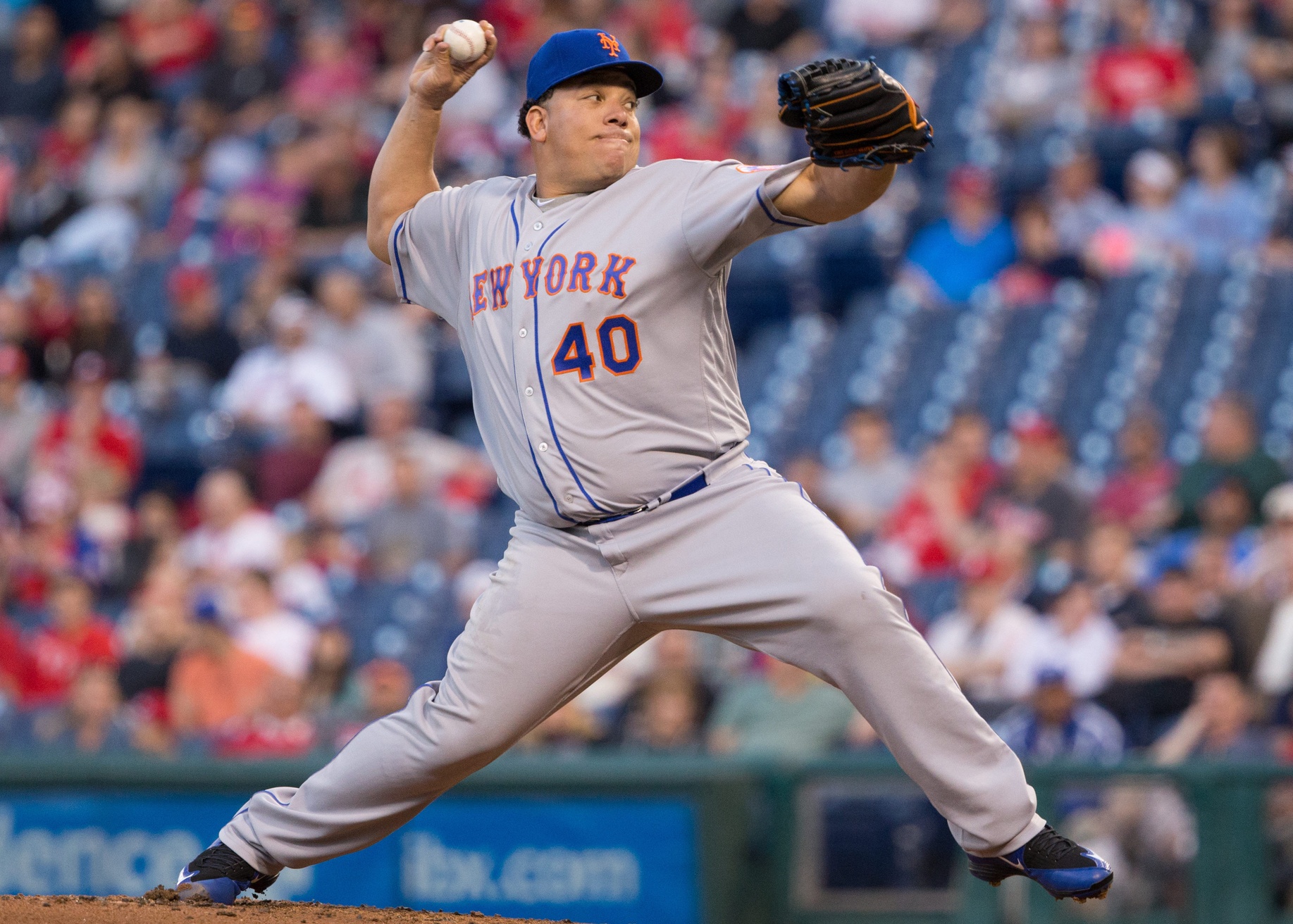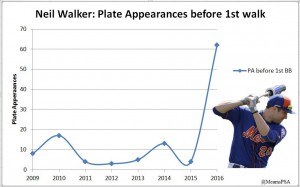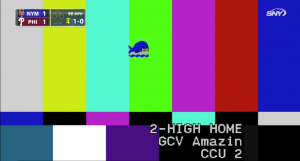Ah, Spring. Birds are singing (Cardinals rookie Aledmys Diaz debuts with a .480/.509/.860 triple-slash), Buds are bursting (Norris posts a 6.75 ERA), and nature eternally renews itself (Ichiro is batting .368). We could sing this every April:
Just because we know that time heals all wounds and regresses all stats, it doesn’t mean early-season lines aren’t fun while they last. For your enjoyment, selected small-sample performances by your New York Mets. — Scott D. Simon (@scottdsimon)
David Wright’s Worst-Ever O-Contact Rate
Anyone who says they can predict what David Wright will do this season is either lying or a witch, but so far he’s putting up unexpectedly strong production, with a TAv of .315 (same as last year) compared to his .283 PECOTA projection. Wright is also drawing a ton of walks, which helps offset his well-below-normal .254 batting average. Wright’s bugaboo at the plate is a career-high 35% strikeout rate, 10 points higher than his second-worst season.
The reason for this is not hard to figure out — a 16% swinging strike rate and a 60% contact rate do not translate well. If this is his new true talent level, Wright may very well be looking at a Mark Reynolds-esque season. But there’s no back condition in the world that would let him maintain a 23% contact rate on pitches out of the zone, which is the worst in baseball and would be the worst in history. He may not get that number up to his 64% career average, and expecting a career high in strikeouts is not a particularly hot take, but David Wright has some pretty clear room for regression to the mean. — Maggie Wiggin (@maggie162)
Walker Isn’t Walking
Neil Walker is a liar. Sure, he’s off to a very nice start in a Mets uniform, hitting .288/.299/.606 with seven homers in just 16 games. Something odd should stand out about that triple-slash though. Walker has hardly lived up to his surname — until Saturday night, he did not have a single walk on the season. Only 16 players since the end of the Deadball Era have managed an OPS+ over 110 while drawing under 20 walks; could Walker be number 17?
Since Walker has been hitting so well, it hardly matters, but eventually he will need to incorporate more plate discipline into his game. Walker has never been a hacking Alfonso Soriano/Dave Kingman type. His walk rate has never dipped below seven percent in a season, yet it took 62 plate appearances in 2016 for him to take four pitches outside the strike zone.
Given his reliable history of normal walk rates, this is a trend that is unlikely to continue for much longer. Walker will walk the walking path to walks. — Andrew Mearns (@MearnsPSA)
Steven Matz Since An Anonymous Scout Called For His Demotion
I get the pressure that comes with having to fill column inches every week. I do. Sometimes there isn’t much baseball to talk about, and you have to conjure a little soft shoe number about fried ham product. Maybe that doesn’t play in the tabloids, I don’t know. There’s good reason why they never make me an editor. But making grand proclamations after one game is a good way to look foolish a couple weeks later. Since our secret scout’s hot take, Matz has thrown 13.1 innings, allowed two runs, struck out 17, and walked 2. So a bit of skepticism might have been useful here. Was Sean Gilmartin really going to be a short-term upgrade? Being a blithe stenographer for a scout that wants his opinion in ink is all well and good, but it can on occasion make you look W A Y behind your peers.
There will still likely be growing pains for Matz during his first full season in the majors, but the stuff matches up with the rest of the Mets’ big four, and one shaky outing after almost two full weeks off a mound shouldn’t have been above the fold on the OpEd page at Panic City Press. Fortunately, lessons have been learned, and we now wait for three or four starts before proclaiming a Mets starter toast. — Jeffrey Paternostro (@jeffpaternostro)
Lucas Duda Since the #SNYWhale
Mets Twitter, like every kind of Twitter, understands the occasional outage, even if we experience acute withdrawal for the few minutes our timelines fail to update. Mets Twitter is far less understanding when our underrated first baseman, he of the career .297 TAv, opens the season slashing .195/.233/.244. That kind of performance deserved its own Fail Whale, and SNY was ON IT.
Following the #SNYWhale’s appearance during Lucas Duda’s second at-bat on April 17, he’s hitting .333/.320/.909. That’s three doubles, three dingers and two singles, along with a sacrifice fly, in 25 post-Whale plate appearances. We all knew Duda would start hitting soon — we just didn’t realize he’d need to be rebooted first. — Scott D. Simon (@scottdsimon)
Logan Verrett’s Microscopic ERA
Until a scoreless inning of mop-up duty in the Mets’ 8-2 win on Saturday night at Turner Field, Verrett was sporting a 0.69 ERA through 13 innings on the year. To say he’s been an especially nice buffer for a rotation that suddenly found itself without Jacob deGrom is an understatement. In starts against Miami and Philadelphia, Verrett allowed no earned runs in 12 innings and struck out 10 against only nine hits and three walks. Sure, consider the competition, but Verrett had command of his pitches — a four-seamer sitting at 91, mixed in with an 84-mph slider — and gave Dan Warthen some emergency starts that kept the team afloat during some early-season uncertainty.
Now that deGrom is back, Verrett returns to the pen, but he’ll surely be called upon to make more spot starts as injuries and circumstances arise. Ultimately, his major contributions this season may come more as a valuable long man-with-starting-experience. Think of Yusmeiro Petit with the 2014 Giants team that won the title. Plus, Verrett is still only 25 and learning just how good he can be. OK, his stuff doesn’t rival that of the others on this staff, and his ERA will surely level off as the year progresses, but he doesn’t need to be deGrom or Harvey or even Colon for the Mets to get decent value from him going forward. For now, they’ll take what they can get. — Erik Malinowski (@erikmal)
Noah Syndergaard (Also) Has A 59 Percent Ground Ball Rate
Hahaha. It’s cool everyone. Despite Jake Arrieta continuing to improve towards a 0.01 ERA and despite Clayton Kershaw putting on a convincing “Sandy Koufax, but longer-lasting” impersonation, some people are calling Syndergaard the best pitcher in baseball … right now. Yes, Thor has more velocity than the Autobahn and a world-beating strikeout rate of 13.1 batters per nine innings, but it’s his ridiculous ground ball rate that has me scratching my head. Yes, it will definitely go down. It must! However, if Syndergaard can raise his ground ball rate from last season (48 percent) and keep it inching up, then that’s a great sign.
Why? Because as much as we’d like it, his velocity is not going to be top-of-the-heap for his entire career. Eventually, someone else will take the velocity crown, and Syndergaard will have to do all the things that mid-career pitchers learn to do: change eye levels, sequence their pitches, and get some grounders. In the meantime, a rising GB rate means that there’s less stress on the young fella’s arm (more short PAs!) and more indication that Thor can not only shove, but he can do literally everything a great pitcher can do. There’s no way he’ll maintain this Keuchel-ian rate for long, but it’s a good, tiny sign. – Bryan Grosnick (@bgrosnick)
The Mets Are #OnPace To Break The Team Home Run Record
What new deadball era? The 2016 Mets could set a new team record for home runs in a year. Through 16 games, the Mets have hit 25 dingers, on pace for 253 for the season. Perhaps even more remarkably, the team only put two balls over the wall in the season’s first eight games, improving to 23 homers, nearly three per game, in their last eight contests.
The 2006 Mets currently hold the franchise record for home runs in a year, at 200. I suspect many fans could recall the stars on that team — Carlos Beltran (41 homers), Carlos Delgado (38), David Wright (26) and Jose Reyes (19) — but how many remember that Jose Valentin added 18 long balls to finish 5th on the squad? Meanwhile, back in 2016, Neil Walker and his seven jacks are on pace for 71, Yoenis Cespedes is on pace for 51 and Curtis Grandslamderson is on pace for 41. — Toby Hyde (@tobyhyde)
Bartolo’s Leading The Mets in K/BB Ratio
Strikeout-to-walk ratio is a fun metric for pitchers because it takes two related but distinct results and provides a balanced statistic. The Mets’ small-sample strikeout to walk leader among all pitchers so far this season is Bartolo Colón, with 8.5 strikeouts per walk. Notably, Colón is the leader among a staff with a rotation-mate, Noah Syndergaard, who is striking out 13.1 batters per nine innings. Colón is not merely leading the pack on the strength of his command (although his miniscule 0.96 walks per nine innings helps). Colón wouldn’t be the leader if it weren’t for 8.2 strikeouts per nine innings. And that figure is worth noting because it’s Colón’s best K/9 in the majors since the year 2000, when aforementioned rotation-mate Syndergaard was seven years old. — Eric Garcia McKinley (@garcia_mckinley)
Bartolo’s BB = HR
Over his first three 2016 starts combined, Bartolo Colon has walked two batters and given up two home runs. Allowing the same or fewer walks than home runs feels unusual, so I went on Baseball Reference’s excellent Play Index tool and looked it up. This used to be a fairly unique trick — it only happened five times before 1998, but has happened 20 times from 1998 through 2015.
The list is littered with pitchers that had good-to-great careers: David Wells four times, Brad Radke twice, Bret Saberhagen, Greg Maddux, and Curt Schilling once each. These starters have some traits in common with each other and Bartolo Colon. They’re extreme command/control artists, flyball pitchers, and they often accomplish this feat late in their careers. The most recent pitcher to give up more home runs than walks over the course of a season? Why, that’s Bartolo Colon in 2015, of course. – Jarrett Seidler (@jaseidler)
Antonio Bastardo Ks > Matt Harvey Ks
Antonio Bastardo has more strikeouts than Matt Harvey. At Bastardo’s current pace, he will punch out 152 batters in only 94.5 innings. Both the raw K total and the innings-pitched marks are outstanding (and unlikely to continue) for a modern reliever. On the other hand, Matt Harvey has struggled to start the season. He has the lowest strikeout rate (5.6 K per 9) and highest walk rate (3.2 BB/9) of any Mets starter. On Friday he kept leaving the ball up, needing 101 pitches to get through five innings. Opposing batters are more likely to make contact with Harvey’s pitches out of the zone instead of swinging and missing. It’s possible that Harvey is still warming up after an aborted Spring Training and has some mechanical issues to sort out. — Noah Grand (@noahgrand)
Jeurys Familia Has The Highest Velocity Of Any Mets Pitcher
Zero-point-one-four. There’s only a 0.14 mph difference in velocity between Jeurys Familia and Noah Syndergaard, but anything over 0.01 is excess. This stat is prime #smallsamplesize material because the sample is exactly what determines Familia’s minuscule advantage over Thor. Over 129 pitches during the 2016 season, Familia has thrown only one pitch under 95 mph on average — his slider — and has used that pitch but 15.5% of the time; his primary pitch, the sinker, averages a shade above 95.5, which is impressive but a full three mph below Syndergaard’s. The starter, however, utilizes his slower changeup and curve over 28% of the time, and with 285 pitches under his belt, this slows down his velo enough to give the closer the temporary edge. — Brian Duricy (@briansusername_)
Photo Credit: Bill Streicher-USA TODAY Sports


